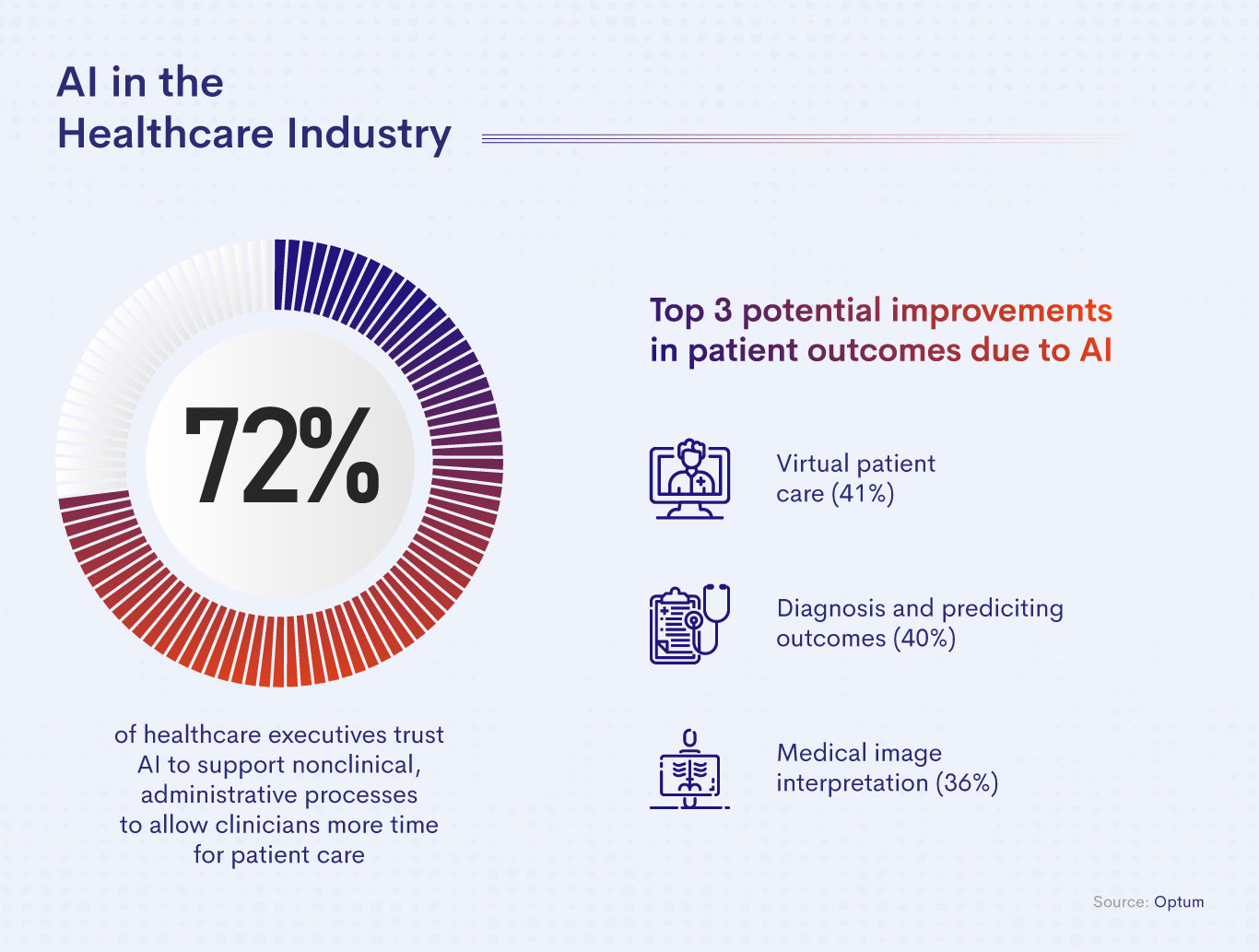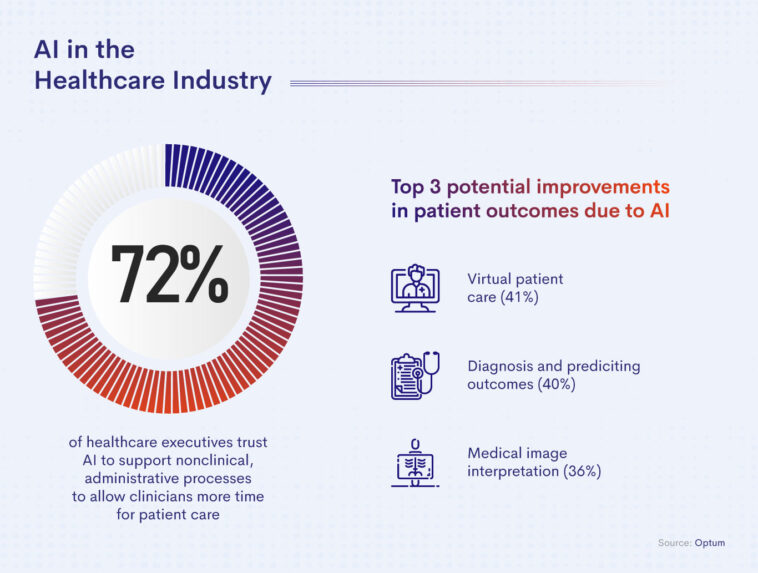
Artificial Intelligence Transforming Patient Outcomes: An Opinion Editorial
The role of artificial intelligence (AI) in modern healthcare has become a topic loaded with discussion, innovation, and great potential. Over the last few years, AI has grown from a novel idea into an essential partner for improving patient outcomes and streamlining pharmacy workflows. In recent years, especially at conferences like the National Council for Prescription Drug Programs (NCPDP) 2025 Annual Conference held in Scottsdale, Arizona, experts have taken a closer look at how AI not only drives breakthroughs in clinical research but also redefines everyday tasks for pharmacists. In this editorial, I will get into real-life examples, expert opinions, and industry trends that demonstrate how AI is revolutionizing processes—despite the tricky parts, tangled issues, confusing bits, complicated pieces, and twists and turns in its adoption.
Harnessing AI in Clinical Trials: Tackling the Tricky Parts
One of the most impressive areas where AI has made a super important impact is in clinical trials. There is no doubt that clinical trials involve a host of challenging elements—from patient recruitment and data analysis to outcome prediction. AI tools have been deployed in these scenarios to help researchers figure a path through the tricky parts that once slowed down the pace of medical discoveries.
The diffusion of AI into clinical trial processes has allowed researchers to:
- Analyze vast datasets quickly to identify potential candidates for trials.
- Predict patient responses with the help of advanced statistical models.
- Monitor live trial data to spot potential safety issues.
These innovations help reduce the intimidating timeframes and nerve-racking wait periods that typically accompany clinical trials. By automating data collection and performing real-time analysis, AI enables researchers to not only save time but also make smarter decisions regarding trial design and patient safety.
Discovering Secondary Drug Applications: Overcoming Tangled Issues in Drug Repurposing
Artificial intelligence is also breaking new ground in understanding the secondary uses for established medications. In a sector where the fine points of drug development and repurposing are usually loaded with problems, AI helps uncover hidden patterns in clinical data that were once difficult to notice.
Through detailed data analysis, AI systems are able to:
- Poke around extensive medical databases for unexpected correlations.
- Reveal alternative therapeutic uses for drugs initially formulated for other indications.
- Reduce the off-putting risks and time delays associated with conventional drug research.
This type of research is incredibly super important in addressing unmet medical needs. With AI, researchers can dive in and expose the subtle parts of patient data that lead to innovative drug applications. This progress has the promise to make treatments available to a wider range of patients, all while steering through the complicated pieces of scientific discovery.
Enhancing Pharmacy Workflow Efficiency: Dealing with Confusing Bits of Daily Operations
Pharmacy operations, which often involve many regulatory requirements, detailed record-keeping, and checks to ensure patient safety, have long been riddled with tension. The integration of AI into these workflows is changing the landscape by offering solutions that streamline processes, reduce the likelihood of errors, and ultimately improve patient outcomes.
For example, AI-enabled systems can automatically verify prescriptions, cross-check medication histories, and suggest dosage adjustments based on real-time data analytics. Some of the tangible benefits include:
- Time-saving automation of routine tasks, allowing pharmacists to focus more on patient care.
- Reduction in human error through robust data analysis and consistent monitoring.
- Improved regulatory compliance by helping pharmacies meet the strict guidelines set by governing bodies.
These advancements help pharmacists manage their way through the nerve-racking expectations of modern healthcare, making it easier to keep up with the ever-growing demand for accuracy and efficiency in every prescription processed.
Meeting Regulatory Requirements: Figuring a Path Through Complicated Pieces of Compliance
Compliance with current legal and regulatory frameworks is one of the core challenges faced by pharmacists and healthcare providers. With the legal landscape continually evolving, ensuring that each pharmacy meets the required standards becomes a complicated piece painted with subtle details and small distinctions. AI, however, has emerged as a key tool to help pharmacies make their way through these challenges.
AI-driven compliance tools offer benefits such as:
- Real-time monitoring of regulatory changes, ensuring that pharmacies are updated almost instantly.
- Automatic record-keeping that meets stringent legal guidelines.
- Error reduction in documentation and reporting, which minimizes legal exposure.
By automating these often nerve-racking regulatory processes, pharmacies can avoid many of the common pitfalls associated with compliance. This means that instead of being overwhelmed by the intimidating aspects of regulation, they can trust intelligent systems to sort out the fine shades of legal requirements with reliability and consistency.
Improving Patient Access and Medication Availability: Paving a Route Through Hidden Complexities
In communities across the country, ensuring that patients have access to the medications they require is a delicate matter. Pharmacy professionals are often required to work through a maze of challenges ranging from inventory management to coordinating with health care providers. AI is becoming an increasingly indispensable ally in this space by offering advanced supply chain solutions, which help pharmacies address intricate issues quickly and efficiently.
Key areas where AI has contributed include:
- Predictive analytics to forecast medication demand, allowing pharmacies to stock appropriately.
- Optimized inventory management that minimizes both shortages and waste.
- Enhanced communication systems between healthcare providers and pharmacies to ensure timely prescription fulfillment.
A comprehensive table outlining some of the key impacts of AI on medication access is presented below:
| Challenge | AI Contribution | Result |
|---|---|---|
| Medication Demand Forecasting | Predictive Analytics | Smoother supply chain and reduced shortages |
| Inventory Management | Automated Stock Tracking | Optimized stock levels and reduced waste |
| Communication Gaps | Integrated Communication Platforms | Efficient coordination between providers and pharmacies |
By reducing the confusing bits in supply management, AI gives healthcare providers confidence in the systems that keep medications available. This is especially beneficial in community settings where every day can bring a nerve-racking uncertainty about access to essential drugs.
Revolutionizing Pharmacist Workload: Moving Past the Overwhelming Routine
Pharmacists are at the heart of healthcare delivery, yet their day-to-day tasks can sometimes be as overwhelming as they are critical. From managing prescription fill-ups to counseling patients and ensuring proper medication use, the role requires a balance between expert knowledge and rapid decision-making. AI has emerged as a sturdy assistant in this area, sharpening the focus on patient care by automating many of the routine, time-consuming tasks.
Recent discussions at the NCPDP 2025 conference highlighted several key advantages, including:
- Automated prescription verification to reduce errors and free up time for patient interaction.
- Data-driven insights that support clinical decision-making.
- Streamlined communication channels enabling rapid updates on drug interactions or regulatory changes.
Through these innovations, pharmacists can get around many of the complicated pieces of their workload, making it possible for them to concentrate on the human aspects of healthcare rather than solely on administrative tasks. This shift not only boosts professional satisfaction but also enhances patient trust and safety.
Integrating Advanced Technologies in Pharmacy: Poking Around the Twists and Turns
One cannot ignore the twists and turns involved in the deployment of advanced technologies within the pharmacy field. As pharmacies continue to integrate robotics, machine learning algorithms, and advanced data analytics, there is a significant learning curve and several side challenges that must be managed. However, the benefits, as demonstrated by testimonials from industry experts like Stanley V. Campbell, Jr. and Yi Deng, PhD, are too substantial to overlook.
To get into the fine points of this transition, it is important to emphasize how AI can help with:
- Automating repetitive tasks that traditionally tax human resources.
- Identifying subtle patterns in patient behavior and medication adherence.
- Offering actionable insights that improve daily operations and long-term planning.
By integrating these advanced solutions, pharmacies are not simply adopting new tools — they are redefining their operational blueprint. While there are certainly challenging adjustments and even a few nerve-racking moments during the initial transition, the end result is a system that is more resilient in the face of unforeseen disruptions and better equipped to handle the modern complexities of patient care.
Building a Future-Proof Pharmacy Infrastructure: Getting Into the Nitty-Gritty of Technology Adoption
As the healthcare industry races forward with the benefits of AI, pharmacies must also focus on developing infrastructure that can support and sustain these innovations over time. Building a future-proof system requires not just the establishment of new technology but a complete overhaul of existing workflows to incorporate seamless digital integration.
The process involves several fine shades of change, including:
- Investments in secure, scalable IT systems that protect patient data while allowing for rapid analysis.
- Training programs for staff to confidently use AI tools without being overwhelmed by the technical details.
- Partnerships with technology providers who understand the subtle parts of both legal requirements and operational logistics.
In many ways, the move towards a more digitally integrated pharmacy ecosystem is much like teaching a seasoned professional to steer through unfamiliar waters. Initially, the myriad options might seem intimidating, but with proper guidance and targeted investments, these systems offer super important advantages that ultimately enhance both patient care and operational efficiency.
Dispensing AI Insights in the Real World: A Conversation on Benefits and Challenges
The discussion around AI in pharmacy is not one-dimensional. While many celebrate the benefits of increased efficiency and improved patient safety, there are valid concerns about data privacy, implementation costs, and the potential for technology to replace the human touch in patient care. When getting into these topics, it becomes essential to get into balanced conversations that acknowledge both the advantages and the potential pitfalls.
Key discussion points raised by experts include:
- Ensuring patient confidentiality while leveraging vast amounts of data.
- Balancing the efficiency gains from automation with the need for human oversight.
- Addressing the intimidating initial costs and technical adjustments associated with system overhauls.
Although these issues may seem nerve-racking at first glance, establishing trust among stakeholders is possible when the technology is deployed with robust security measures and transparent reporting practices. Rather than replacing pharmacists, these tools serve as a welcome aid that allows professionals to focus on critical aspects of patient care while leaving repetitive tasks to well-designed algorithms.
Legal and Ethical Considerations in AI-Enhanced Pharmacy Practices
No discussion on AI in healthcare would be complete without addressing the legal and ethical challenges that surface with rapid technological change. The path toward incorporating AI into pharmacy practices is riddled with a number of tricky questions regarding liability, patient consent, and data security. Lawmakers and industry leaders are currently sorting out these issues, making it essential for pharmacies to work closely with legal experts to ensure compliance and uphold ethical standards.
Several important topics include:
- The delicate balance between data usage for improved care and maintaining patient privacy.
- Clarifying liability when decisions assisted by AI lead to unexpected outcomes.
- Developing guidelines that are flexible enough to adapt to new technological advancements while protecting patient rights.
In this context, pharmacies must sort out their internal protocols to stay on the right side of the law. Trust is built not just through innovative technology but also by ensuring that such innovations fully respect legal boundaries and ethical guidelines. This means that, as AI gets more integrated into daily operations, continuous regulatory updates and staff training become super important to maintain the highest levels of integrity and transparency.
Incorporating AI into Community Health: Bridging the Gap between Technology and Patient-Centered Care
Effective use of AI in the community pharmacy environment goes beyond internal efficiency gains. At its core, it represents an actionable means to increase patient access to care while simplifying complex health interventions. Community pharmacies, often the first point of contact in healthcare, can use AI to provide more tailored, immediate, and responsive services.
Several community-driven initiatives have shown that AI can:
- Identify patients who might be at risk of certain adverse events based on historical data.
- Offer personalized medication management plans that consider a patient’s unique medical history.
- Improve communication between patients, healthcare providers, and pharmacists through integrated digital platforms.
For community health, this means that the technology not only improves operational workflows but also opens up new avenues for preventive care and early interventions. The transformation is not merely about efficiency; it is a shift toward truly patient-centered care where technology enhances the human aspects of the pharmacy profession. Indeed, every small distinction made in automating routine tasks translates into more meaningful time spent with patients, counseling them on medication usage, and building long-term, trust-based relationships.
Lessons Learned from the NCPDP 2025 Experience: Real-Life Examples and Expert Opinions
At the NCPDP 2025 Annual Conference, industry experts such as Stanley V. Campbell, Jr. and Yi Deng, PhD, provided clear insights into the current and future roles of AI in pharmacy. Their conversation underscored the need for a harmonious balance between leveraging cutting-edge technology and preserving the empathetic essence of patient care. Drawing from their experiences, several lessons emerge that are useful not only for large healthcare organizations but also for independent pharmacies striving to innovate.
The session highlighted the following takeaways:
- Implementing AI is not about replacing professionals but rather about giving them better tools to manage the overwhelming routine tasks.
- Even though the transition to an AI-enhanced environment comes with a few nerve-racking challenges, structured pilot projects and phased rollouts can make a significant difference.
- The role of AI in deciphering subtle details of large-scale data is crucial for both clinical trials and everyday pharmacy operations.
It is through this blend of technology and hands-on experience that pharmacies can start to find their way in what sometimes appears to be a maze of complications and legal risks. With every new tool comes a responsibility—a duty to maintain transparency, preserve patient confidentiality, and prioritize the human touch in healthcare.
Future Prospects: A Collaborative Vision for AI in Pharmacy
Looking ahead, the continued integration of AI in pharmacy practices presents both exciting opportunities and a call for continual adjustments. Future prospects include an even greater emphasis on personalized medication, smarter supply chain management, and improved patient safety protocols. The path forward might feature additional overlapping regulations, but it is also fertile ground for breakthrough solutions that can redefine the very landscape of patient care.
Key areas to watch in the coming years include:
- Enhanced real-time data analysis to predict and prevent adverse drug events.
- Greater integration of wearable technology with pharmacy systems for more dynamic patient monitoring.
- Development of user-friendly interfaces that allow pharmacists to easily figure a path through complex data sets without being overwhelmed by technical complexities.
By pushing the boundaries of what is possible through sustained collaboration between technology providers, policymakers, and frontline healthcare professionals, the opportunities are super important. This unified approach will enable the benefits of AI to ripple across the entire healthcare continuum, ensuring that even the most complicated pieces of daily operations can be rendered more manageable and effective.
Implementing AI in Practice: Practical Steps and Strategies for Pharmacies
The journey from conceptualizing AI solutions to implementing them in day-to-day pharmacy practice may seem intimidating at first. However, methodical planning and a phased strategy can make the process both manageable and successful. Pharmacies looking to adopt AI-driven innovations should consider the following practical steps:
- Assessment and Planning: Begin by identifying specific tasks that are prone to human error or are time-consuming. Evaluate how AI can streamline these functions without compromising patient care.
- Staff Training: Organize comprehensive training sessions that help staff understand how to get around the new digital tools. Focus on turning every technical challenge into an opportunity for professional growth.
- Pilot Projects: Test AI tools in controlled environments before scaling. This allows pharmacies to work through the fine points of integration and adjust their processes based on real-world feedback.
- Feedback Loops: Establish continuous feedback mechanisms to assess performance, address any unintended consequences, and ensure that the new systems are working as intended.
When pharmacies take the time to get into the nitty-gritty of AI adoption, they lay the groundwork for future success. It’s about finding the right balance between technological innovation and the traditional values of patient-centered care—a journey that requires vigilance, learning, and regular updates as new twists and turns emerge.
Addressing Concerns and The Path to Trustworthy AI
Despite the evident benefits, some practitioners remain cautious—often for good reason. Concerns surrounding data security, privacy, and the ethical deployment of AI tools are real and must be handled with transparency and diligence. Building a trustworthy AI framework involves addressing each of these issues head-on by:
- Ensuring comprehensive cybersecurity protocols are in place to protect sensitive information.
- Implementing stringent data governance policies that align with legal standards and patient expectations.
- Regularly reviewing and updating ethical guidelines that govern the use of AI in clinical and pharmacy settings.
By openly discussing these issues with both staff and patients, pharmacies can foster a culture of trust and collaboration. This proactive mindset helps to allay fears and ensures that the introduction of advanced technology remains a step forward in patient care rather than a cause for additional concern.
AI and the Evolving Legal Landscape: Working Through the Fine Points of Regulations
The legal and regulatory frameworks governing AI use in healthcare are continually evolving. With each new development, pharmacies must be agile and responsive. This means constantly updating internal policies and collaborating with legal experts who understand the subtle parts of emerging regulations. The legal landscape might be full of problems and sometimes seem on edge, but with systematic planning and clear communication, the challenges can become manageable.
Important legal focal points include:
- Data Ownership and Patient Consent: Clearly defining who controls and accesses patient data is a must-have aspect of legal compliance.
- Liability in AI-Driven Decisions: Establishing guidelines that delineate responsibility between automated systems and human oversight when errors occur.
- Cross-Jurisdictional Compliance: Managing the slight differences in laws across different states or regions to ensure uniformity in pharmacy practice.
Table 2 below offers an overview of the core legal issues and the recommended responses:
| Legal Challenge | Recommendation | Outcome |
|---|---|---|
| Data Ownership | Develop clear data policies and patient consent forms | Enhanced transparency and trust |
| Liability Issues | Define roles for AI and human oversight in decision-making | Improved accountability |
| Cross-Jurisdictional Disparities | Regular legal reviews and in-house legal counsel | Consistent compliance across regions |
Pharmacies that proactively work through these legal challenges not only safeguard themselves but also set a higher benchmark in the evolving world of healthcare technology.
Conclusion: Embracing AI While Honoring the Human Element
In summary, artificial intelligence stands as a remarkably powerful tool in the modern pharmacy landscape. The benefits are clear—from enhancing clinical trials and discovering secondary drug uses to streamlining pharmacy operations and ensuring legal compliance. Although the path is loaded with tricky parts, tangled issues, and occasional nerve-racking moments, the overall trajectory points toward a more efficient, patient-centered future.
Pharmacies that successfully integrate AI find themselves better equipped to figure a path through the complex landscape of modern healthcare. By leveraging advanced technology while investing in staff training and maintaining ethical and legal integrity, these institutions not only make daily operations smoother but also significantly enhance patient outcomes.
This op-ed is a reminder to all industry professionals: while the journey of integrating AI into pharmacy practice is replete with challenging bits and subtle details, the potential rewards for patient care—and for the future of healthcare—are enormous. With thoughtful implementation and a commitment to continuous improvement, AI can transform the pharmacy field into a more dynamic, responsive, and deeply patient-focused domain.
Looking to the future, the push for enhanced technology integration is only set to grow. Yet, even as advancements continue, we must not lose sight of the fact that at its heart, healthcare is about human connection. Thus, every innovation should be seen as an opportunity to enhance that bond, rather than replace it.
It is in our collective interest—as legislators, healthcare providers, drug developers, and pharmacy professionals—to work together to streamline the adoption of technology while carefully steering through the legal and ethical challenges that arise. In doing so, we ensure that every patient benefits from the smart, efficient, and caring system we all aspire to build.
Indeed, technology should be thought of as a partner. A partner that helps us automatically manage the overwhelming routine tasks, dive in to discover hidden connections in data, and ultimately, give us more time for the vital human interactions that define quality healthcare. As AI continues to carve its path into the future of pharmacy, the steady hand of tradition must remain, guiding each new step with wisdom, compassion, and an unwavering commitment to patient care.
The conversations happening at forums such as NCPDP 2025 illuminate that this balance is achievable. With careful implementation, relative openness to innovation, and an unyielding focus on ethical practice, we can harness the full potential of AI—transforming tricky parts into opportunities and complicated pieces into clear, manageable steps forward.
Let this editorial serve as both an endorsement of AI’s growing role and a call to action for all pharmacy professionals: to embrace these advances, invest in necessary training and infrastructure, and continue to place the well-being of patients at the forefront. In a rapidly changing world, every small twist and turn in our technological journey is an invitation to build a brighter, more connected future for healthcare.
As we move forward, may we all keep in mind that the integration of AI is not an end in itself but a means to a far broader, patient-centered vision—one where technology and human expertise combine to deliver exceptional, compassionate care every single day.
Originally Post From https://www.drugtopics.com/view/ai-s-ability-to-directly-impact-patient-outcomes
Read more about this topic at
Transforming patient care…in partnership
5 Ways Technology in Nursing is Transforming Patient Care


